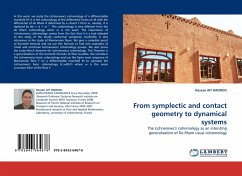Multiplicity diagrams can be viewed as schemes for describing the phenomenon of "symmetry breaking" in quantum physics: Suppose the state space of a quantum mechanical system is a Hilbert space V, on which the symmetry group G of the system acts irreducibly. How does this Hilbert space break up when G gets replaced by a smaller symmetry group H? In the case where H is a maximal torus of a compact group a convenient way to record the multiplicities is as integers drawn on the weight lattice of H. The subject of this book is the multiplicity diagrams associated with U(n), O(n), and the other classical groups. It presents such topics as asymptotic distributions of multiplicities, hierarchical patterns in multiplicity diagrams, lacunae, and the multiplicity diagrams of the rank-2 and rank-3 groups. The authors take a novel approach, using the techniques of symplectic geometry. They develop in detail some themes that were touched on in Symplectic Techniques in Physics (V. Guillemin and S. Sternberg, Cambridge University Press, 1984), including the geometry of the moment map, the Duistermaat-Heckman theorem, the interplay between coadjoint orbits and representation theory, and quantization. Students and researchers in geometry and mathematical physics will find this book fascinating.








